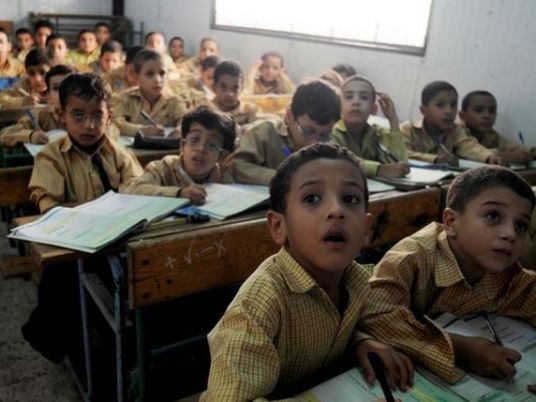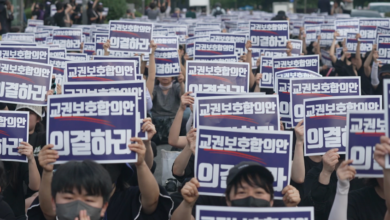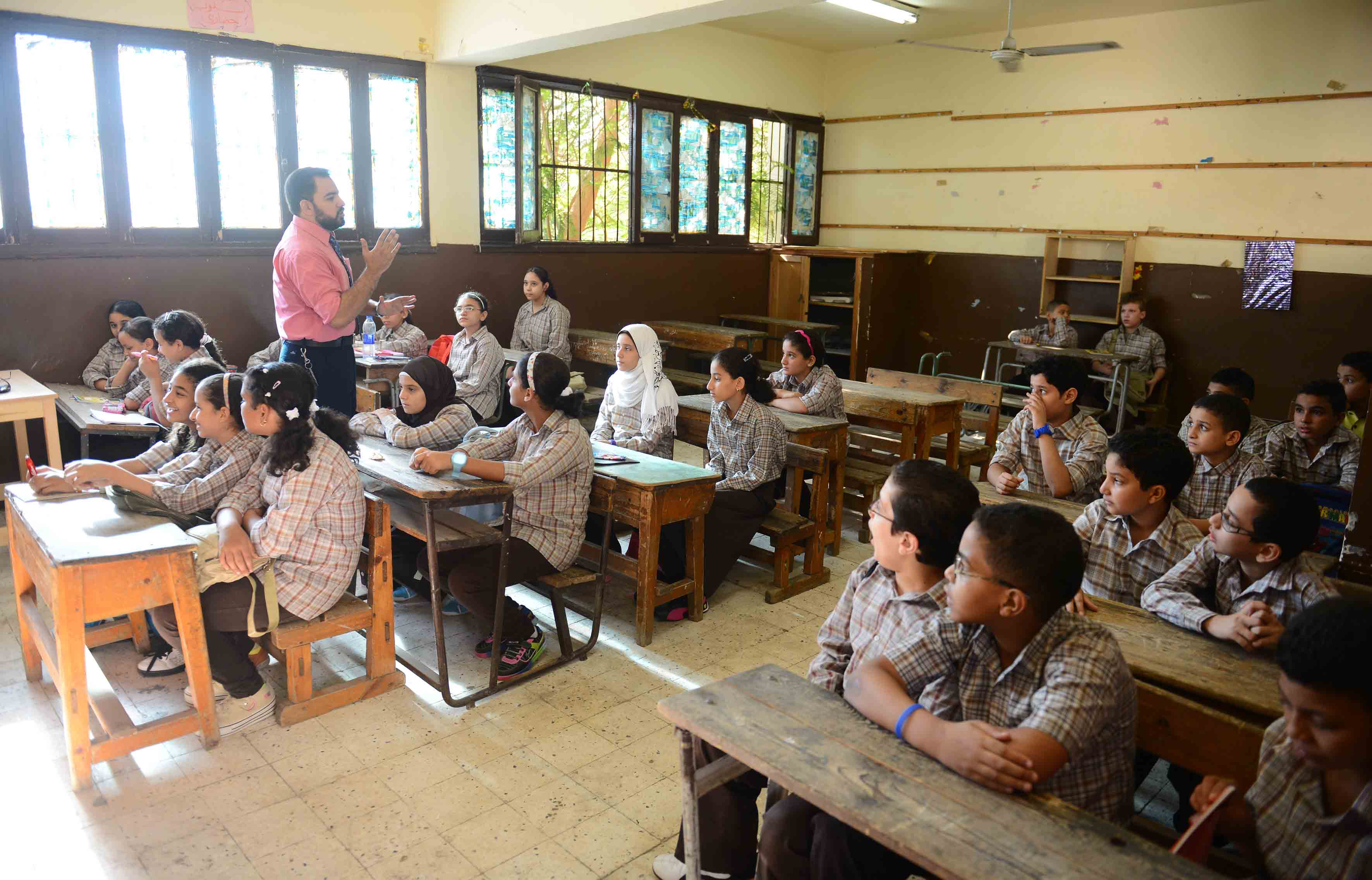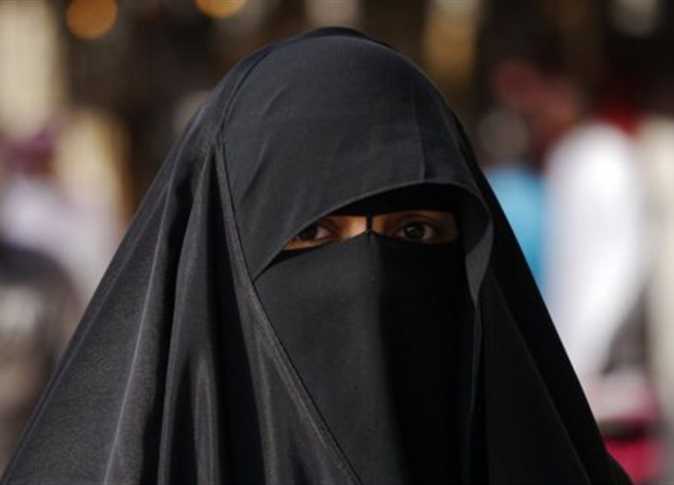Despite the disparity of swine flu pandemic preparedness between public and private schools, the hype of schools’ closure has reached private and public schools alike.
The Ministry of Health has previously ordered the closing of public schools and the postponement of the launch of the academic year to 3 October. While some private and international schools have already started teaching, of those some have opted to stop.
But what makes a private profit-making school ready to confront the influenza pandemic is not the same as in a public school.
The bathrooms of the Heliopolis Preparatory Girls Schools, a public school that caters to 470 students, were full of dust. Magda Mahmoud, the headmistress, said they made use of the school postponement to paint them. “We are painting the bathrooms and are reopening two unused rest rooms,” said Mahmoud, seated behind her office housed in an incumbent building.
Public schools have been requested by central educational administrations to allocate a room for suspected cases. “We have a health care social worker and a medic who is responsible on our school alongside another two schools,” said Mahmoud, while showing the so-called “isolation room” that was being re-painted. She mobilized the school teachers to contribute to equipping the room with a bed and a mattress, for there was no other way.
“The administration has promised to give us cleaning tools with the beginning of the school year,” she said, seeming confident that the situation in her school will be under control. “Inshallah (God willing), nothing wrong will happen.”
Relying on the solidarity of school teachers to better prepare public schools for the pandemic is almost common. “What else can we do? I have been spending a lot from my pockets and asked my colleagues to contribute,” said a headmistress of another public girls’ school in downtown Cairo, who preferred to remain anonymous. She also had to ask the teachers to get together and pitch small amounts of money to buy a bed and a mattress for the “prevention room” that she was required to set up.
“I will solicit the support of some parents to help us buy hygiene tools for the school until we get some from the administration,” she added. Touring the school bathrooms, one could spot their cleanliness despite their poor conditions. “I am planning to clean up everything with acidic liquids as the school starts. But the problem is with the students themselves. Most of them come from a poor background and know little about hygiene,” she said. She was sitting in the school corridor, which dark walls bore a mix of dirt and old age. Her school hosts some 400 students in 16 classes, hence with an average of 25 students per class.
And for a LE40-fee per year, those students cannot get any more out of their schools. For a LE40,000 fee a year, however, there are more options. “We have been holding meetings with the parents to ask for their suggestions with regards to the school delay,” said Jouly Emad, a teacher of religion in the International School of Egypt, located on the Qatameya road, just outside of Cairo and a favorable spot for private schools for the well-to-do. “There are many suggestions on the table, such as video-taping classes and making them available on youtube channels on the internet,” she said. Other suggestions include teaching classes in open areas such as al-Azhar Park and at the Pyramids. The school also suggested making home visits to the students where some class material can be taught. A close ratio of teacher to students makes this last option possible.
While many of those schools had started teaching for the past two weeks despite the closure of public schools, they opted to close their doors today and resume on 3 October. The French News Agency reported that a ministry of health official said that the decision to close private schools is to have a unified beginning of a scholarly year across schools in the country.
Amany Mohamed Reda, a household helper, cannot conceive of such options for her children, who are enrolled in a public experimental school in al-Helmeya al-Gedida district, in central Cairo. Worried about the fate of her two sons once they kick off school, she went to meet the principle. “I got no reactions from them. They said they re-painted the classrooms’ walls, but the bathrooms are filthy. How can this protect our children?”
“I wonder why they don’t try to find alternatives. They could split classes into two and reduce the week to three intensive days for each student, if there is no space capacity,” she said, worried about the fact that her sons are jammed alongside another 35 students in a classroom. “If it were up to me, I would take care of studying with the children at home and only bring them to school at exams time. But we’re not even allowed to do this.” According to her, students who refrain from attending school are penalized and can loose their enrolment in the school altogether.
The Ministry of Health puts the number of H1N1 infections in Egypt at 887 cases, two of whom have died.
Basic free education for all citizens has been the gateway to most Egyptians to escape the perils of illiteracy. It has been embedded in the country’s legal system since the 1952 military revolution, but has also been subject to challenges with regards to resources availability and curricula development.




